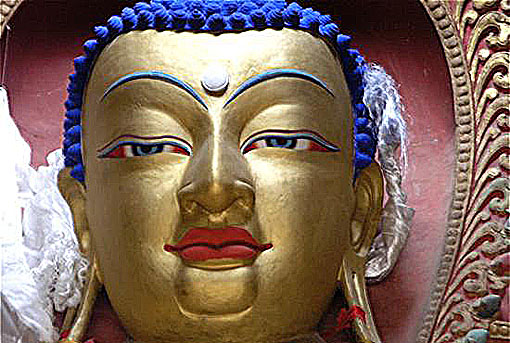|
||||||||||||||
|
||||||||||||||
Kumbum StupaKumbum Stupa
The whole complex is made up of the Large Gold Tile Hall, the Small Gold Tile Hall, the Longevity Hall, the Large Classics Hall, the Manjusri Bodhisattva Hall, the Sakyamuni Hall, the Hall for Warrior Attendants of Buddha, the Amitabha Buddha Hall, the Time Wheel Tower, the large kitchen, the Eight Towers for Buddha, the Passage Gate Tower and other buildings. .As a combination of the Tibetan and Han forms, the Kumbum Stupa (Ta’er Temple) has a unique style. The layout is compactly organized and the towering buildings display great momentum with a resplendent and magnificent view. Gyantse’s Kumbum Stupa contains a superlative collection of Tibetan frescoes. Though their stylistic origins are controversial, the influence of Nepalese art on the development of this indigenous movement, together with influences from India and China can’t be ignored. Features that distinguish the Gyantse style from other Tibetan schools include its varied palette that combines pale tones with rich, its presentation of highly expressive figurative forms, a strong emphasis on well-modeled physiognomy and the lavish detail of such decorative elements as jewellery and textiles.
|



